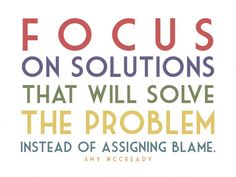We must have education law that we can—and willingly will—follow.
Quality educational opportunities for all children should be our goal.
WE MUST DEMAND that the Elementary and Secondary Education Act (ESEA) return to its original focus:
Focus on low-income children and their communities. To do so, we must go back to the original titles of ESEA for direction.
Original Titles of ESEA
Title I – Education of Children of Low Income Families: to provide financial assistance to local education agencies in support of children from low-income families, to expand and improve community efforts to meet these children’s learning needs.
Title II – School Library Resources, Textbooks, and Other Instructional Materials: to provide access to educational materials for all students in the State recognizing the invaluable human and material resources that a library provides for a community.
Title III – Supplementary Educational Centers and Services: made available to the entire community to provide services not currently offered but deemed vital to educational improvement in underserved areas. These are services deemed essential to children being “ready to learn.” All communities should be directed to use their existing resources wisely by encouraging cooperative efforts with existing non-profits and civic organizations. *(Note the interconnection of community in Titles I, II & III.)
Title IV – Educational Research and Training, Cooperative Research Act: to support educational research and training that enables the Department of Education to more effectively accomplish its purposes and to perform its duties including dissemination of information. This research and training must be targeted at improving the quality of teaching, counseling, advising, and parental and community engagement practices—to improve student achievement.*(Note: Although Title I was the centerpiece of the original ESEA of 1965, Title IV is now central to our improvement and progress.)
Title V – State Departments of Education: funding through this title is “to stimulate and assist in strengthening the leadership resources of State educational agencies” to assist states in identifying “educational problems, issues, and needs in the State.” *(Note: Accountability remains with the states to ensure they meet their responsibility for providing quality learning opportunities for all students.)
Focus on Engaging Parents and Communities
Title I (low-income) schools unsuccessful in engaging parent and community support need to be approached through a different avenue. The Keeping PACE (Parents And Communities Engaged) Act of the 111th Congress had the right focus — ensuring that schools are centers of communities. The problem with Keeping PACE is that it was a competitive grant proposal for something that impoverished communities badly need. It’s not a want; it’s not an experiment. It is a need. It can be accomplished using already existing community resources and Title I formula funds.
Focus on Improving Leadership
Improving school leadership holds the potential for the most immediate impact on school improvement. Schools identified as chronically low-performing need strong, effective leadership to take these schools through a successful school improvement process. To expect under-performing states to train their own “turnaround” leaders makes no sense,
It is more efficient and expedient “to establish a National Education Leadership Academy” to “greatly enhance our national capacity to transform schools by gathering in one place the most outstanding leaders of school turnaround, trainers and scholars of transformation”… “to create a state-of-the-art curriculum and pedagogy, including field placements, to train principals, superintendents and senior district officials to effectively lead, guide and coordinate teams of stakeholders in this critical [improvement/turnaround] process.”
Focus on Improved Opportunities for Teachers & Counselors
Turning to the ideas of two presidents:
President Kennedy believed “teachers would profit from a full year of full-time study in their subject-matter fields. Very few can afford to do so”. Funding would provide expanded learning opportunities to teachers across this country. Additionally, it would “accord to this profession the support, prestige and recognition it deserves.”
President Obama once suggested,
“…a new Service Scholarship program that will recruit top talent into the profession, and place these new teachers in overcrowded districts and struggling rural towns, or hard-to-staff subjects like special education, in schools across the nation.”
“…more Teacher Residency Programs … especially in math and science.”
“…expanding mentoring programs that pair experienced, successful teachers with new recruits.”
Simply put, instead of punishing schools and all school people, we need to assist “failing” schools in doing assessments of their school climate, governance issues, finances, student outcomes, unmet needs, and community resources. And we need to educate the people who will be assisting in the improvement efforts both in the schools and community, building the capacity, to enable them to go through a school improvement process successfully. ©Victoria M. Young, The Crucial Voice of the People, Past and Present, 2012
Bottom line:
“school reform consists of teacher education and capacity building.” Robert V. Bullough
 Education reform requires laws and policies that support a continuous improvement process. It necessitates setting an expectation of wise use of resources. But to make improvement happen, we must define and clarify how we want schools governed and foster community support through informed citizens.
Education reform requires laws and policies that support a continuous improvement process. It necessitates setting an expectation of wise use of resources. But to make improvement happen, we must define and clarify how we want schools governed and foster community support through informed citizens.
Progress requires all involved understand the change process.
Footnote: Because Congress fast-tracked a replacement for NCLB after eight years of neglecting to do so, I received a challenge. So in five days, I wrote an alternative that includes many of the things others have suggested over the years. Therefore, I dubbed it The People’s Alternative.

Pingback: Rise to the Challenge - The Crucial VoiceThe Crucial Voice
Pingback: The Public Trust is Broken - The Crucial VoiceThe Crucial Voice